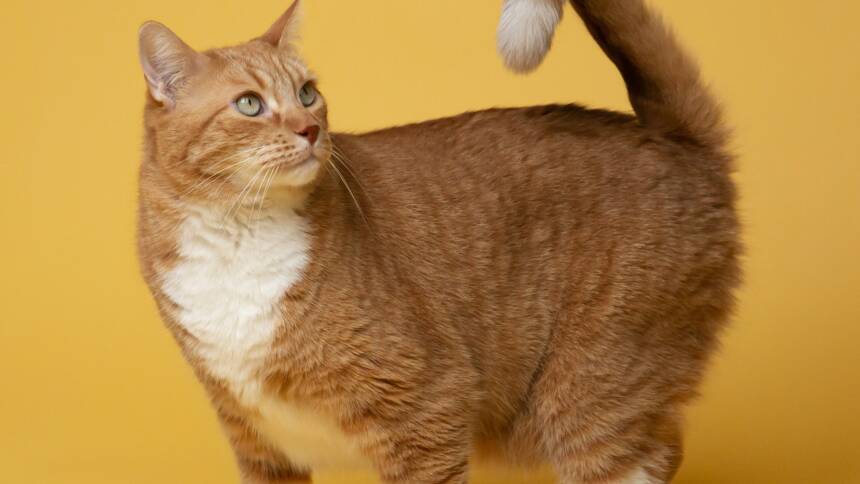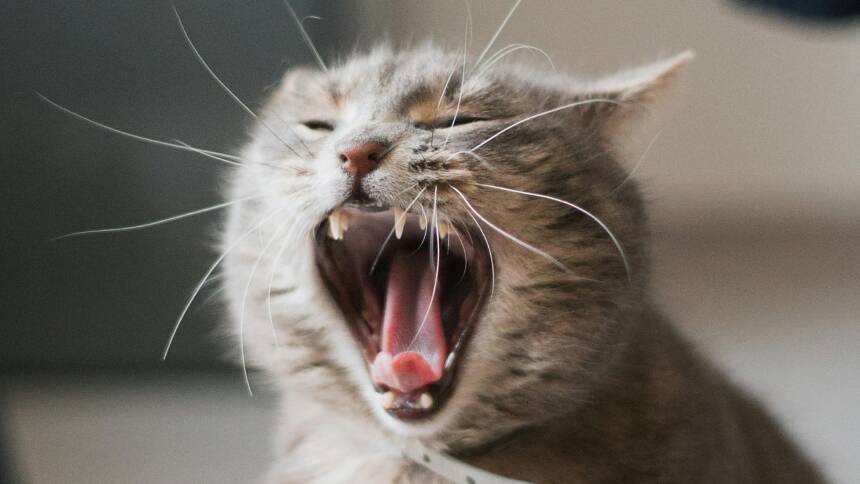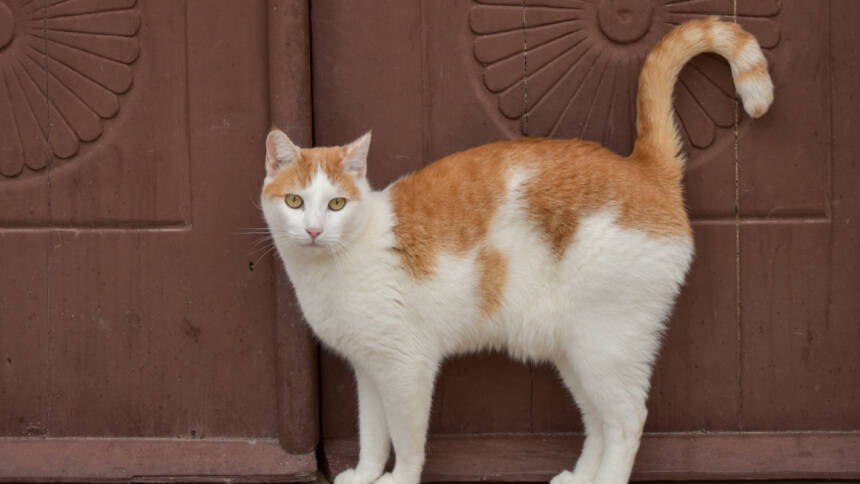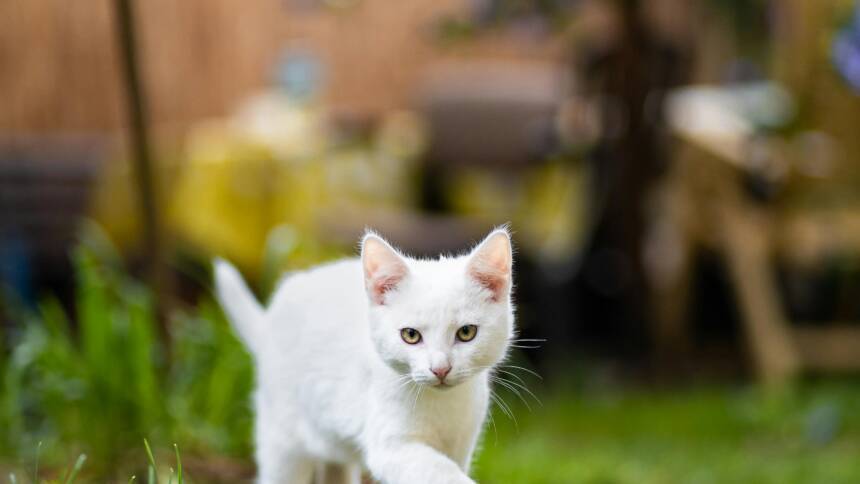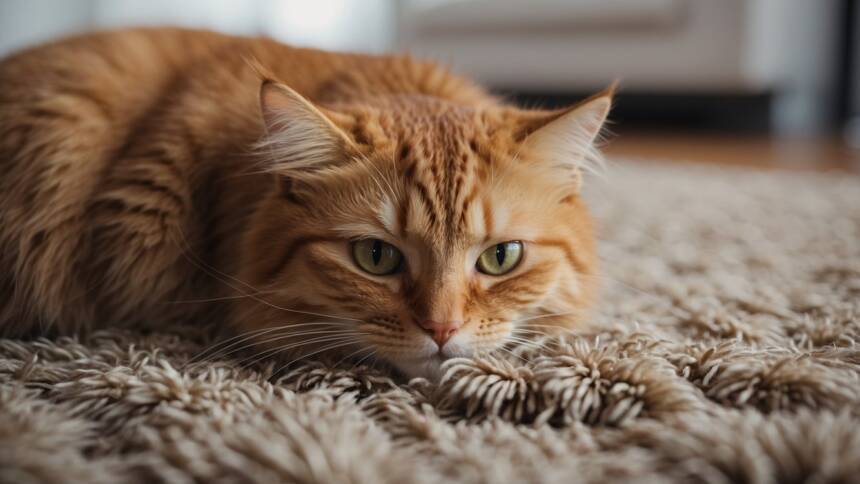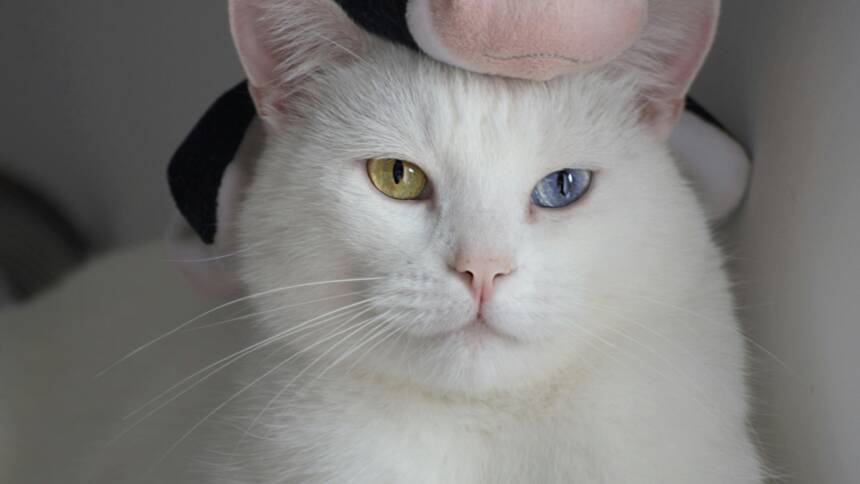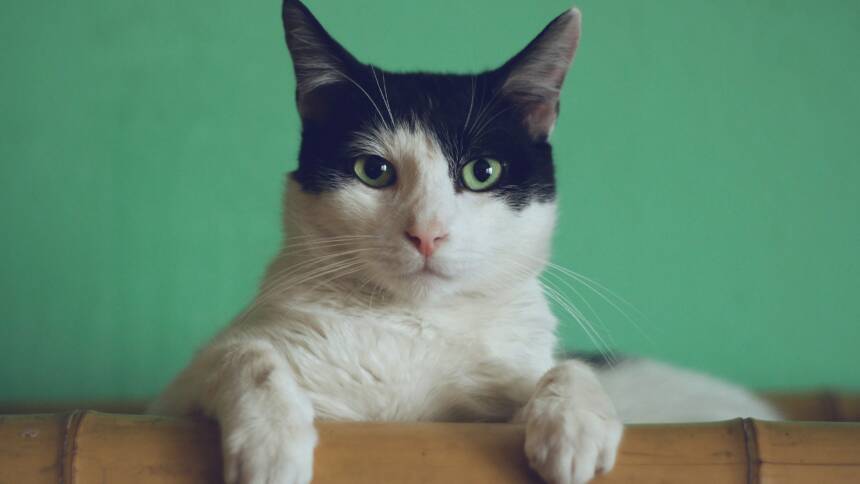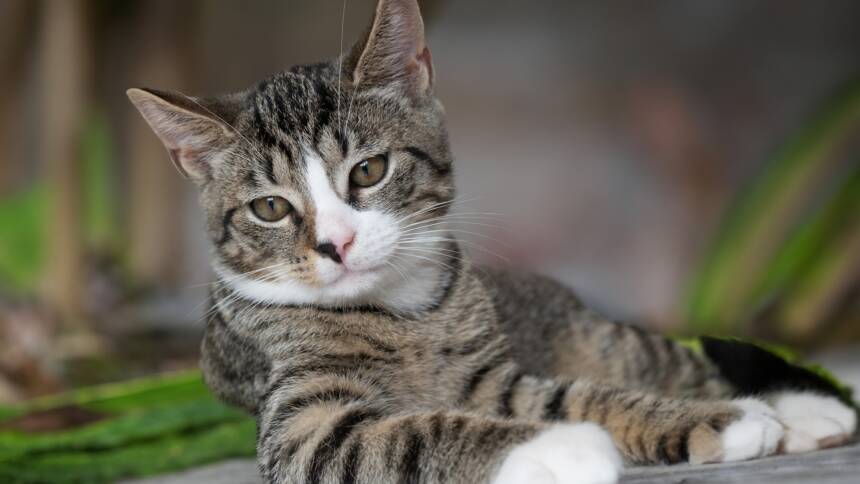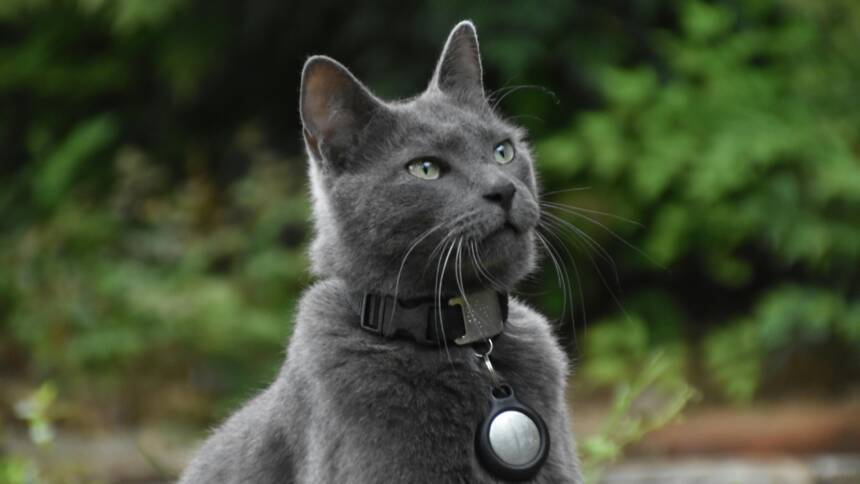Cats communicate in various ways, including vocalizations, body language, and specific behavior such as tail movements. A quivering tail, in particular, is a notable form of feline body language that can convey a range of emotions or intentions. Understanding why a cat’s tail may quiver is valuable for pet owners who wish to better understand and respond to their feline companions’ needs and moods.
When a cat’s tail quivers, it can indicate several things depending on the context. For example, a cat may exhibit a quivering tail when it is particularly excited or happy to see its owner. This form of tail vibration often accompanies a friendly greeting gesture and shows a high level of arousal in a positive situation. Alternatively, when a cat’s tail vibrates subtly at the tip, it can be a sign of focused attention, such as when the cat is hunting or playing and is highly concentrated on its target.
Moreover, slight tail quivers can also manifest when a cat is experiencing agitation or mild irritation. In such instances, it’s crucial to observe additional cues, such as the cat’s posture, ear positioning, and overall environment, to accurately interpret the cause of the tail movement. Because cats rely so heavily on nonverbal signals to communicate, paying attention to tail language and other body cues is essential for understanding their behavior and responding appropriately to their emotional states.
Understanding Cat Tail Language
Cat tail language is a vital part of feline communication, reflecting a cat’s mood and emotions. Observing a cat’s tail can provide insights into their feelings and intentions.
Tail Position and Mood Correlation:
- Upright Tail: Typically signifies a content and relaxed cat. If they approach with a high, quivering tail, it often indicates excitement or happiness, especially upon greeting their owner.
- Twitching Tip: When focused on prey or an object of interest, cats may exhibit slight twitching at the tail’s tip, signaling concentration or mild irritation.
- Low Tail: Cats with tails held low or tucked between the legs can be experiencing fear or submission.
- Puffed Tail: A tail resembling a bottle brush indicates a frightened or agitated cat; this posture is used to appear larger to potential threats.
Relaxed versus Quivering Tails:
A relaxed cat’s tail is typically held loosely, whether the tail is up, down, or in a natural position, indicating the cat feels safe and at ease. In contrast, quivering or vibrating of the tail, especially when it is upright, can mean different things. A quivering tail in a contented cat, often accompanied by purring, suggests excitement or affection. However, if the cat quivers its tail while backed up against a surface, it might be engaging in urine marking behavior. It is crucial to consider the context of the cat’s overall body language and the environment to interpret the correct meaning of tail quivering.
By understanding the nuances of cat tail language, one can foster a deeper relationship with their feline companions, responding appropriately to their emotional states and needs.
Common Reasons for Tail Quivering
When observing a cat, one may notice that sometimes their tail exhibits a quivering or shaking motion. This behavior can be attributed to various emotional states. Below is a breakdown of common reasons:
Excitement: A cat’s tail may quiver when they are particularly excited. This can be seen when they greet their human companions after a period of absence, indicating happiness and pleasure.
Happiness: A softly quivering tail, combined with an upright position and relaxed ears, typically signifies contentment or a friendly disposition towards a person or another cat.
Agitation and Stress: Rapid tail movements or twitching at the tip could denote agitation or stress. When faced with an uncomfortable situation, cats might quiver their tails as a sign of unease.
Anxiety: Subtle shakes or quivers may also occur when cats feel anxious, often seen in unfamiliar environments or during unsettling changes to their routine.
Aggression: A vigorously shaking tail that accompanies hissing or backward-facing ears may signal aggression or fear. This can arise during territorial disputes with other cats or in response to threats.
Fear: In the presence of a perceived danger, a quivering tail, especially when combined with a crouched body posture, often reflects fear.
Understanding these tail movements is pivotal in gauging a cat’s emotional state. While tail quivering can stem from excitement or happiness, it’s essential to consider the broader context of a cat’s body language to accurately interpret whether they are experiencing stress, anxiety, aggression, or fear. Observing accompanying signs will assist in discerning the precise cause behind a cat’s quivering tail.
Identifying Stress and Anxiety
When a cat experiences stress or anxiety, its body language, notably tail movements, can provide clear indicators. A stressed or anxious cat may exhibit tail quivering or shaking as a sign of their discomfort. This behavior often accompanies other signs of nervousness, which pet owners should be aware of for the well-being of their feline companions.
Observing the tail’s positioning is key. A low tail can be a signal of fear or anxiety, especially when coupled with crouching behavior. This stance suggests the cat is trying to make itself appear smaller or ready to flee. It is not uncommon for a cat feeling threatened or frightened to display this combination of physical cues.
In some cases, tail quivering alone may not conclusively indicate anxiety. Thus, it is essential to consider other factors:
- Ears flattened against the head
- Dilated pupils
- Hissing, growling, or puffing fur
If these behaviors persist, consulting a veterinarian is advisable to rule out any underlying medical issues and to receive guidance on managing the cat’s anxiety.
A calm and secure environment helps mitigate feelings of anxiety. Ensuring the cat has a quiet retreat and is not exposed to frequent loud noises or sudden changes can significantly reduce its stress levels. Recognizing and addressing these signs responsibly supports a cat’s emotional health.
Interpreting Tail Movements and Postures
Cats communicate a range of emotions and intentions through their tail movements and postures, which can be deciphered to understand their state of mind better.
The Relaxed Tail
When a cat is feeling content and relaxed, its tail usually appears in a natural, neutral position. It may be extended straight out with a slight curve at the tip, indicating a state of ease and satisfaction.
The Puffed Tail
A puffed or bushy tail can signal a cat experiencing fear or demonstrating defensive behavior. This tail posture is a part of their attempt to appear larger to ward off threats.
The Low or Tucked Tail
A tail positioned low to the ground or tucked under the body is often an indication that a cat is feeling nervous or submissive. This may occur when they’re scared or in an unfamiliar environment.
The Thrashing or Whipping Tail
Intense tail thrashing, whipping, or thumping can reflect a cat’s aggressive or angry mood, possibly due to irritation or annoyance. It can also suggest predatory behavior if the cat is focused on potential prey.
Cat Communication and Vocalizations
Cats are adept at using a variety of vocalizations to communicate both with humans and other cats. Common cat vocalizations include the familiar meow, which is often directed at humans rather than other felines. Adult cats typically reserve the meow for initiating contact with people or to express a necessity, such as hunger.
Other vocal expressions include:
- Purring: Usually indicates contentment and is often used in a relaxed environment.
- Growling and Hissing: Signs of distress, fear, or a warning to back off. These sounds can escalate to yowling in more intense confrontations.
Each vocalization comes with a set of accompanying body language cues. For instance, a cat who is hissing or growling will often display defensive body language, such as an arched back, flattened ears, and puffed-up fur in an attempt to appear larger and more intimidating to a perceived threat.
Understanding the subtle nuances of feline communication necessitates attention to both sounds and body signals. Facial expressions are also part of this complex communication system. Slight changes in ear position, eye dilation, and mouth movements can provide additional context to the vocal messages being sent.
Here’s a brief overview of feline facial cues:
| Expression | Meaning |
|---|---|
| Ears forward | Interest, curiosity |
| Ears flattened | Annoyance, anxiety, aggression |
| Slow blinking | Trust, affectionate gesture |
| Whiskers forward | Excited, engaged |
| Whiskers splayed | Afraid or defensively aggressive |
| Mouth slightly open | Tasting the air, may indicate agitation |
Cat owners can deepen their bond with their pets by learning these vocalizations and body language. With attentive observation, communication between cats and their human companions can become a rich and rewarding exchange.
Physical Health and Tail Quivering
Tail quivering in cats can be associated with physical health issues, quite apart from their complex body language. A cat owner observing such quivers or shaking of the tail should consider whether the behavior is a sign of a health concern.
Possible Health Issues Leading to Tail Quivering:
- Pain: Cats that experience discomfort, possibly from injuries or arthritis, may exhibit tail quivering as a reflexive response to pain.
- Infections: Tail movements can sometimes suggest underlying infections, including those that affect the urinary tract, which may cause cats to shake or quiver their tails unusually.
Diagnostic Signs and Action Steps:
- Observation: If a cat’s shaking tail is accompanied by other symptoms, such as a reluctance to move, changes in eating habits, or unusual vocalization, it is time to consult a veterinarian.
- Veterinarian Consultation: A thorough examination by a veterinarian is crucial for pinpointing the cause of the tail shaking. The veterinarian may check for signs of tenderness, asymmetry, or other abnormalities that could signify health issues.
| Symptom | Possible Condition | Action |
|---|---|---|
| Excessive quivering | Pain or emotional distress | Observe and consult a vet |
| Limping or avoidance of pressure on tail | Injury or arthritis | Immediate vet examination |
| Changes in bathroom habits | Infections or internal issues | Vet consultation for tests |
Monitoring and Treatment:
Cats may mask their pain, making vigilance on the part of the owner essential. A veterinarian may prescribe medications to treat infections, propose dietary changes, or recommend other interventions aimed at reducing pain and discomfort, depending on the diagnosis.
Note: Any observed changes in a cat’s tail quivering pattern, particularly if linked with other signs like a change in the mouth, such as drooling or foul odor, should prompt a visit to the veterinarian. These changes may signify dental issues possibly linked with the observed tail quivering.
The Role of Emotions in Tail Quivering
Cats communicate a complex range of emotions through the movement of their tails, and tail quivering is a significant part of this non-verbal language. When observing a cat whose tail is quivering, it’s important to consider the context to understand the emotion being expressed.
Happiness and excitement are commonly associated with a tail held high and quivering; this can often be seen when a cat greets their owner or shows a playful demeanor. In contrast, anger or agitation may be interpreted from a tail that is thrashing or thumping against the ground.
- Fear: A puffed-up tail that quivers can indicate fear or defensive behavior.
- Annoyance: A swift tail flick or mild quiver can suggest minor irritation or annoyance.
- Friendly Greeting: A relaxed but upright tail that vibrates is a sign of a friendly greeting.
- Confidence: A confidently held high and quivering tail reflects self-assurance.
| Tail Position | Emotion Indicated |
|---|---|
| Upright Quiver | Happiness, Friendly Greeting |
| Thrashing Tail | Anger, Agitation |
| Puffed Tail | Fear |
| Swift Flick | Annoyance |
Analyzing the motion in tandem with other body language cues provides a clearer picture of a cat’s emotional state. Owners should note the accompanying behaviors such as ear positioning, fur bristling, and vocalizations to accurately interpret their cat’s feelings. Tail quivering is just one part of the elaborate system cats use to communicate their emotions.
Advice for Cat Owners
Understanding a cat’s tail quivering can provide valuable insights into their needs and well-being. The following advice is designed to help cat owners decode this aspect of feline body language and ensure optimal care.
When to Consult a Veterinarian
Cat owners should observe the context in which tail quivering occurs. While oftentimes it is a benign behavior associated with excitement or happiness, there are certain signs that should prompt a visit to the vet:
- Persistent quivering without clear cause such as excitement or greeting.
- Quivering combined with signs of distress like hiding, low body language, or decreased appetite.
- Tail quivering following a fall or injury, as it may indicate pain or damage.
Providing a Stress-Free Environment
Cats communicate their emotional state through their tail and other body language, so a relaxed tail often indicates a relaxed cat. To reduce stress and fear, consider the following:
- Maintain a consistent routine to help cats feel secure.
- Create “safe zones” in the home where the cat can retreat to for peace.
- Minimize loud noises and abrupt changes to the living space.
Behavioral Training Tips
Positive reinforcement can be effective in teaching cats and understanding their behavior. Cat owners should focus on these strategies:
- Reward playful behavior that indicates a happy, engaged cat with treats or affection.
- Use a calm voice and gentle touch to reinforce relaxed body language.
- Discourage inappropriate scratching or biting by redirecting to toys or scratching posts.
By monitoring cat communication and maintaining a stable environment, cat owners can often understand and influence their cat’s behavior to mutually enhance their relationship.
Final Thoughts
Cats express a myriad of emotions through their tail movements. Quivering, in particular, often signifies heightened feelings or intentions. Cat owners should interpret quivering in context, observing their cat’s environment and concurrent behaviors for accurate understanding.
Reasons for Quivering:
- Excitement: When greeting owners or encountering a favored stimulus.
- Marking Territory: The release of scent from glands near the tail communicates ownership.
- Anticipation: Before pouncing or engaging in play.
- Stress or Anxiety: Often accompanied by additional signs such as dilated pupils.
Understanding tail language, inclusive of quivering, is instrumental in ensuring a cat’s emotional well-being. Confident and social cats may quiver their tails as a friendly overture, while stressed cats may benefit from a calm and secure space to retreat.
Predators in nature rely on body language as a silent communicator. Domestic cats retain this instinctual behavior. Recognizing the nuance between a quiver of confidence and one of fear reinforces the bond between cats and their humans. It ensures that cats are approached and cared for in a manner that respects their emotional state.
Observation is key. Tail quivering is a genuine insight into a cat’s mind; a window through which owners can glimpse their feline’s complex personality. It is a call for humans to be attentive and empathetic, to react with understanding rather than assumption.
